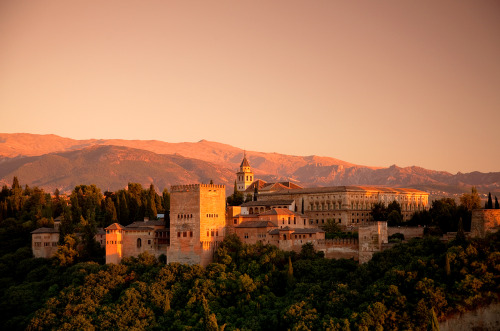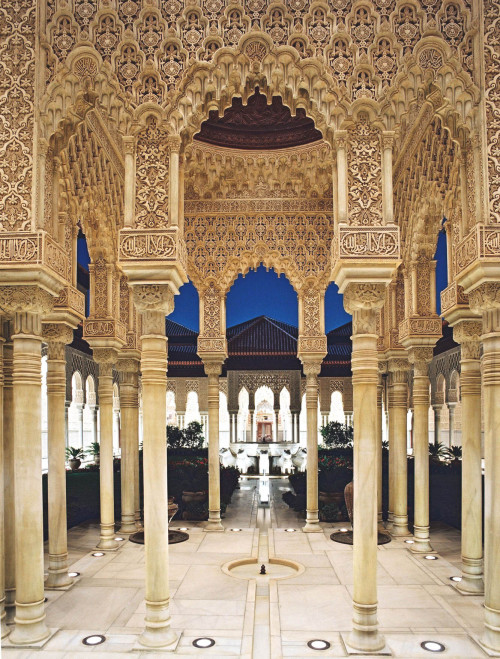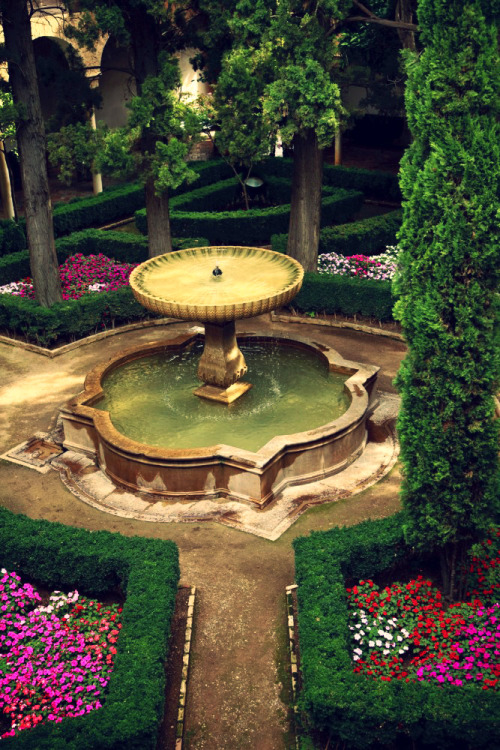The Alhambra is a UNESCO World Heritage Site and the inspiration for many songs and stories
Alhambra the complete form of which was Calat Alhambra, is a palace and fortress complex located in Granada, Andalusia, Spain. It was originally constructed as a fortress in 889 and was converted into a royal palace in 1333 by Yusuf I, Sultan of Granada.
The Alhambra’s Islamic palaces were built for the last Muslim Emirs in Spain and its court, of the Nasrid dynasty. After the Reconquista (reconquest) by the Reyes Católicos (“Catholic Monarchs”) in 1492, some portions were used by the Christian rulers. The Palace of Charles V, built by Charles V, Holy Roman Emperor in 1527, was inserted in the Alhambra within the Nasrid fortifications.
After being allowed to fall into disrepair for centuries, the Alhambra was “discovered” in the 19th century by European scholars and travelers with restorations commencing. It is now one of Spain’s major tourist attractions, exhibiting the country’s most significant and well known Berber Islamic architecture.
By order of the Regency of the Kingdom, 10 February 1870, confirmed by Royal Decree on 21 July 1872 and amplified by Royal Decree on 11 June 1896, the Alcazar of the Alhambra of Granada, as well as their gardens and accessory structures, are declared national-artistic monuments, and Elvira’s Gate is declared incorporated.
In the twentieth century, by Royal Decree on 27 July 1943 the gardens of the Alhambra and the Generalife are declared Historical Gardens. More recently, at the UNESCO Convention, which was held in Buenos Aires between 29 October and 2 November 1984, the World Heritage Committee proceeded to officially include the Alhambra and the Generalife of Granada on the World Heritage List.
{source: stormswanerforsaken}


